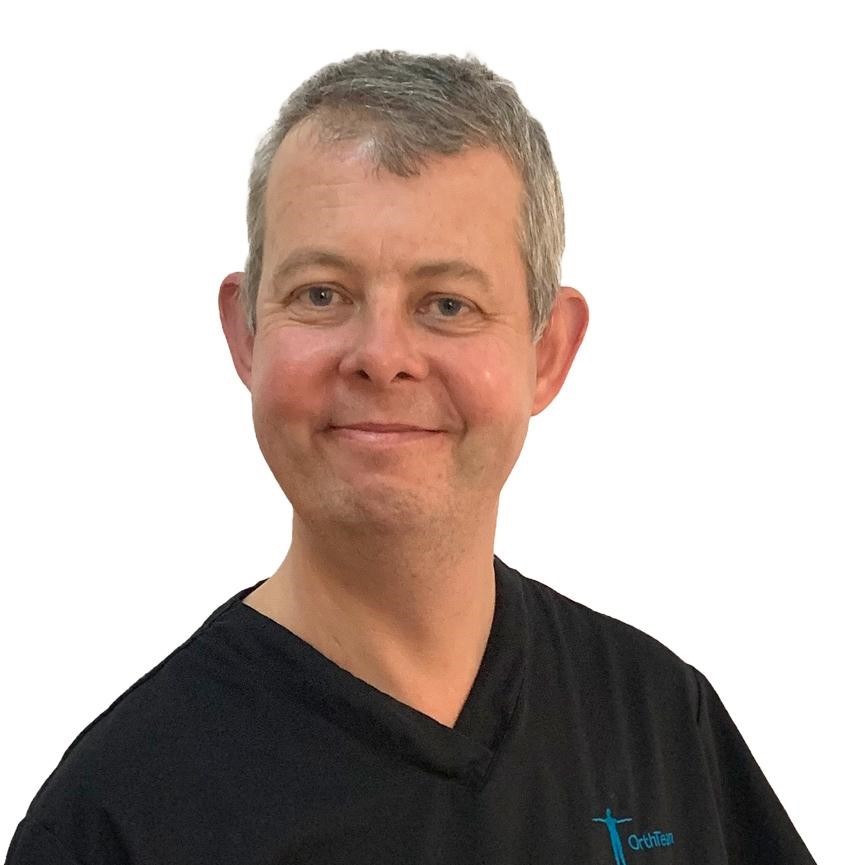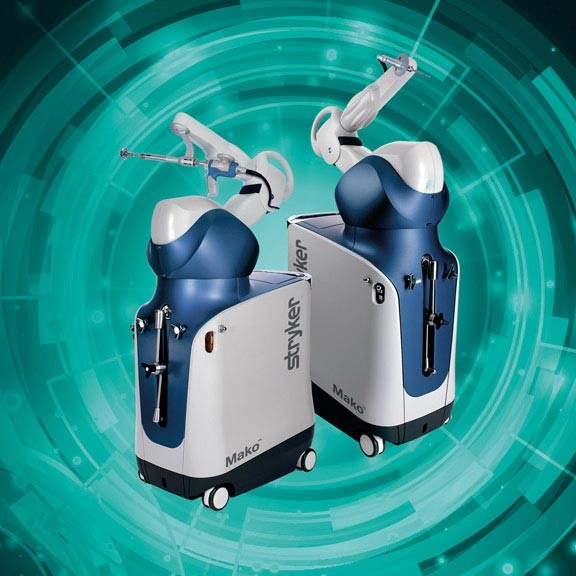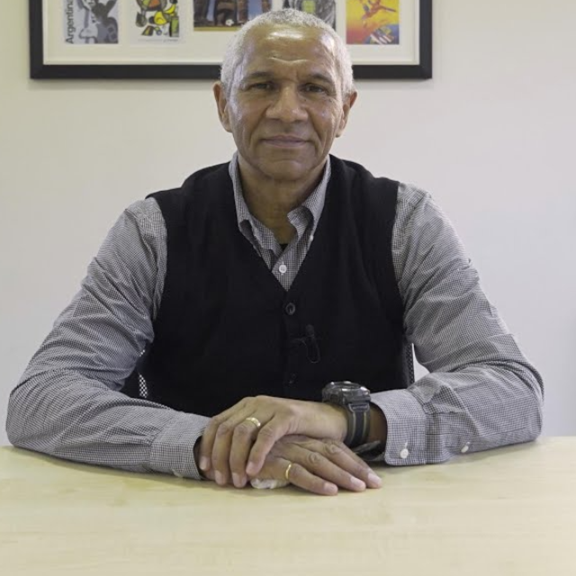Pioneering robot revolutionises hip and knee joint replacement
Spire Manchester Hospital were the first facility in the North West of England to introduce Mako, pioneering robotic technology that has transformed the way hip and knee replacements are carried out.
Spire Manchester is No.1 in the UK - the hospital performed the most Mako robotic-assisted joint replacements in 2021
Consultant orthopaedic surgeons at Spire Manchester Hospital use the advanced Mako robotic arm system to assist during total hip replacements, total knee replacements and partial knee replacements. The robotic technology provides a personalised surgical plan for joint replacement surgery.
CT scans are used to create a 3D model of the patient's hip or knee for pre-surgical planning. In the operating theatre, your surgeon follows the personalised surgical plan while preparing the bone for the joint implant. The Mako robotic arm guides the consultant within pre-defined areas which prevent them from moving outside planned areas, avoiding the removal of healthy bone tissue.
As the surgeon uses the robotic arm to resurface the knee or hip joint for the placement of implants, the robotic arm uses real-time feedback to guide the surgeon's movements enabling a high degree of precision and accuracy in placing implants.
Advantages of using the Mako robot-assisted procedure
Compared to traditional surgery, Mako robot-assisted surgery has been proven to:
- Significantly reduce pain after surgery1
- Allow a faster recovery in early knee movement2
- Perform joint replacement surgery with 2–3 times the accuracy3
Without Mako, surgeons use a burr saw to remove bone. They work by eye and experience - instead of looking at the bone itself to determine whether enough has been removed. Mako tracks healthy and diseased bone so the surgeon can clearly see how much bone should be removed.
The robotic arm is equipped with a saw and the surgeon is free to remove bone within the boundaries identified during the planning stages. If the surgeon attempts to move outside these boundaries, the saw will turn off. This helps the surgeon minimise the trauma to the hip or knee and preserves the maximum amount of healthy tissue.
Specialist consultant surgeons using the Mako system
What the surgeons say

“The future of joint replacement surgery has now arrived. Mako allows me to carry out hip replacements with a degree of accuracy that has never been possible before. Reducing complications and improving patient satisfaction. I recommend this to all my patients.”

“Mako is significant leap forward in the evolution of performing knee replacement surgery. It allows me to personalise the surgery so it is customised to my patient and their anatomy, together with improved accuracy and safety of the bone cuts using the robotic arm and finally individualised placement of the implants.”

“The Mako system allows us to adjust the position of the knee in a virtual model of the patients anatomy and ensure a perfectly balanced knee. The robotic assistance then ensures we place it exactly where planned. This really is a huge leap forward in terms of accuracy.”

"I believe robotic assisted hip and knee replacement has the potential to improve every surgeon’s performance and reassure patients in relation to the technical approach to surgery. This has the benefit of allowing patients to focus hard on their rehabilitation, exercises and physiotherapy after surgery."

“Mako is the cutting-edge technology in knee replacement surgery. It combines the advantages of all the other systems available, with a world leading knee prosthesis and added safety for the patient. All of this allows me to implant knees more accurately and deliver normal feeling knees more often.”
How to get to us
The hospital is situated approximately 20 minutes from both Piccadilly and Victoria railway stations in Manchester city centre, and only 10 minutes from Manchester International Airport.
For sat nav please use postcode M20 2ZA.
Spire Manchester Hospital,
170 Barlow Moor Road
Didsbury
Manchester
M20 2AF
For sat nav please use postcode M20 2ZA
About Mako
Mako procedures have been carried out for over 10 years, with the first knee replacements being carried out in 2006, and the first hip replacement carried out in 2010. Both procedures were conducted in Florida USA. There are 300+ Mako systems assisting with surgery worldwide spanning 19 countries.
Over 70,000 robotic-arm assisted hip and knee procedures have been carried out so far and over 700 surgeons worldwide regularly perform Mako procedures.
- Accuracy of UKA Implant Positioning and Early Clinical Outcomes in a RCT Comparing Robotic Assisted and Manual Surgery. Blyth MJ; Jones B; MacLean A; Anthony I; Rowe P; 13th Annual CAOS Meeting, June 12-15, 2013, Orlando, FL, USA
- Kayani, Konan, Tahmessabi, Pietrzak, Haddad. Bone Joint J 2018;100-B:930–7. Robotic-arm assisted total knee arthroplasty is associated with improved early functional recovery and reduced time to hospital discharge compared with conventional jig-based total knee arthroplasty
- Bell SW, Anthony I, Jones B, MacLean A, Rowe P, Blyth M. Improved Accuracy of Component Positioning with Robotic-Assisted Unicompartmental Knee Arthroplasty. J Bone Joint Surg Am. 2016 Apr 20;98(8):627-35
Spire Healthcare does not endorse one medical product or device over another. Robotic arm assisted surgery may not be suitable for some patients. Your consultant will help you decide what treatment is best for you.




